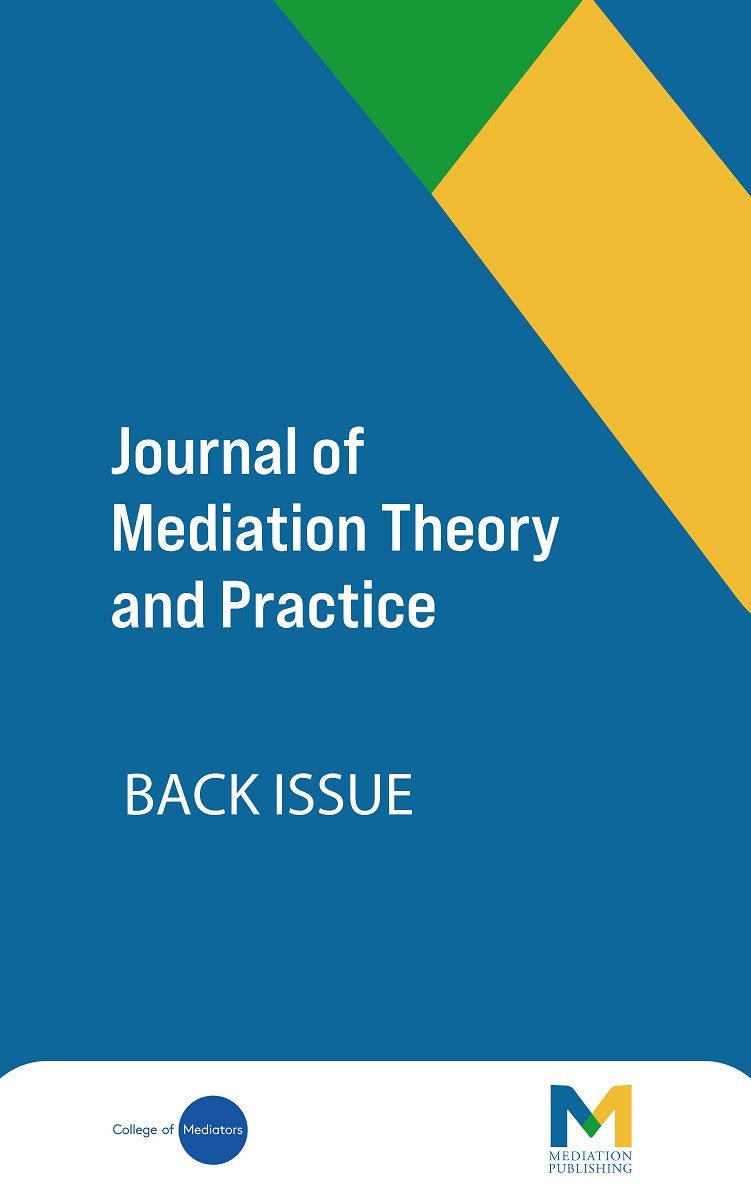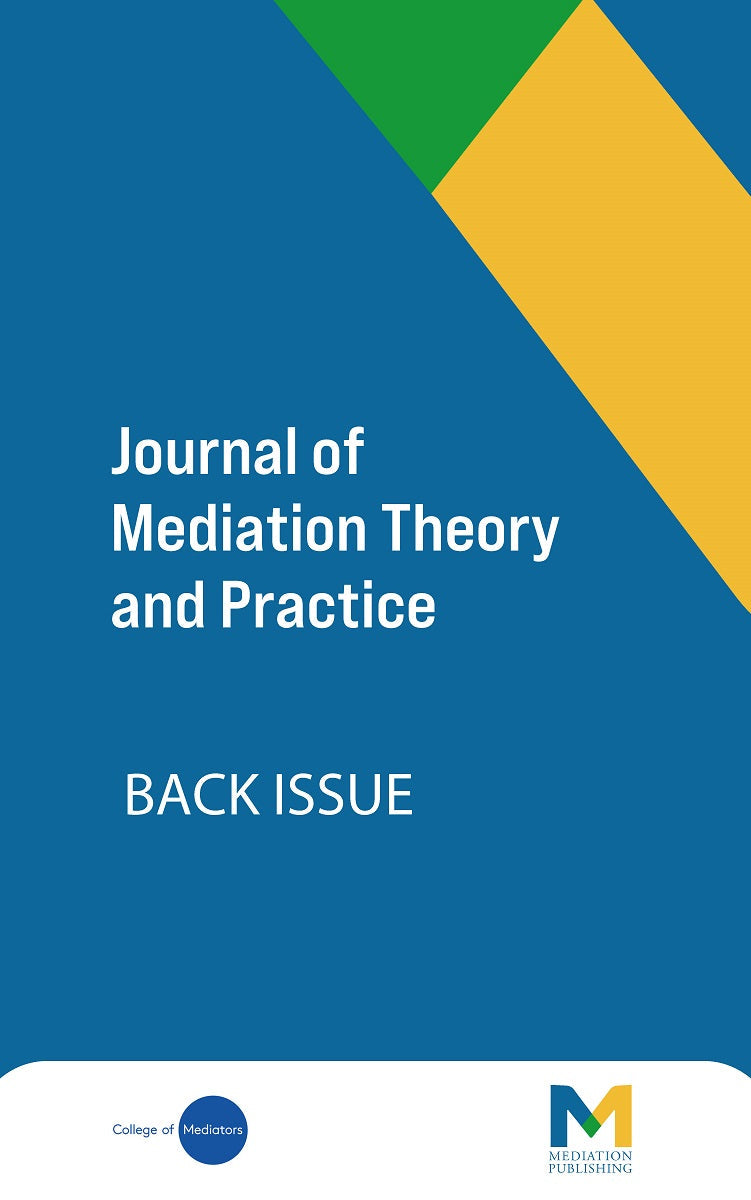Mediation Publishing
Journal of Mediation Theory and Practice Back Issues: 2016-2
Journal of Mediation Theory and Practice Back Issues: 2016-2
Couldn't load pickup availability
The back issue(s) for the year above for the Journal - Mediation Theory and Practice.
These issues were published by Equinox Publishing and will be despatched promptly after order, sometimes separately to other items you might order.
Individual articles are also available for purchase by download separately through the title links.
Contents for 2016-2
Research Article: Beyond the box: Diversity, mediation and new models of demographic data profiling Lia D. Shimada and Christopher W.B. Stephens, University of Roehampton. This research study explores the value of a new methodological approach in data collection for understanding the diverse identities of mediators who constitute the College of Mediators – a national mediation professional body, with members drawn from across the UK. It forms part of a broader project to provide a much-needed critique of the standard ‘tick-box’ approach to demographic monitoring used by most organisations. Questions were designed to elicit open responses to a range of diversity strands, including age, gender identity, ethnic identity, national identity, religious or spiritual orientation, and sexual orientation. The responses gave useful insights into the ways in which mediators identify as diverse individuals, and the language they use to describe themselves. A picture emerges from this study of an organisation with a strong demographic profile. Yet within this profile, the differences expressed and the language used provide a rich source of data for investigating ‘diversity’. The responses to this study affirm the need for a new approach to the collection of demographic data. The paper concludes by drawing out themes which emerge around personal identity and the need for nuanced understanding of human experience. We offer reflections on the data which pose important questions for organisations – such as the College of Mediators – to consider about the relationship between diversity and organisational culture, and we argue for more nuanced understandings of and challenges to the concept of neutrality in mediation.
Research Article: Building bridges through learning as mediation parties’ lived experiences: An interpretative phenomenological analysis by Timea Tallodi, University of Salford. While abundant literature has been devoted to describe mediation, there is little research exploring how parties perceive and make sense of the process. This article reports two associated main themes from an innovative qualitative research project conducted to understand the lived experiences of parties to mediation using interpretative phenomenological analysis for the first time in the literature. The findings present (1) learning as the key experience of participants in mediation, a so far neglected angle of the process, and (2) the mediator’s compassionate approach involving conveying ample understanding and sensitivity toward parties’ needs and concerns as facilitating learning. Meanings and fresh concepts have been generated through sensitive and careful analysis of the cases, providing a rich portrait of the dynamics of learning, and the way learning bridges differences between the sides. Implications for mediators and research are outlined.
Shipping & Returns
Shipping & Returns
We ship worldwide.


